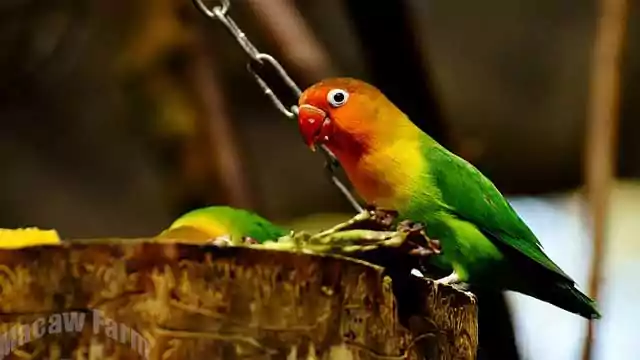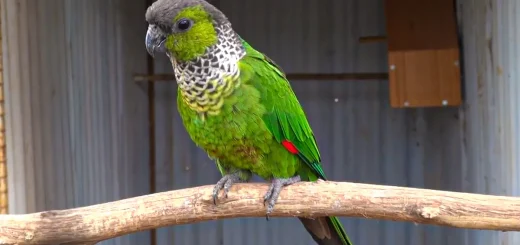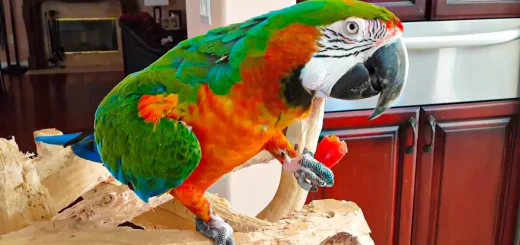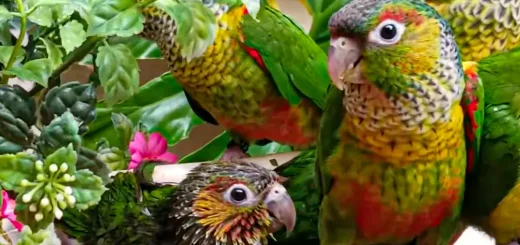Lovebirds Species Profile – Macaw Farm

Description of the Lovebirds
Contents:
Common names
Scientific name
Origin and history
Volume
Average lifespan
The mood
Lovebird colors and markings
Care for Lovebirds
Feed the lovebird
Cage
Exercise
Lovebirds are a favorite among pet birds, often called “pocket parrots”, and are among the most colorful you’ll find. There are various love birds in the world, not all of them are kept as pets. Three popular species can make attractive and loving companions for bird lovers and you don’t need a pair of love birds to keep them happy.
All the love birds order the Agapornis and Sittaciformes, making them small parrots. Altogether, there are nine types of affection winged creatures. The most common one to keep as a pet is the Fisher lover, the black-faced lover, and the peach-faced lover.
Common names
Fisher’s boards, black-masked lovebirds, yellow-colored love boards, pitch-faceted lovebird, pocket parapets
Scientific name
Fisher’s Lover (Agapornis Fishery)
Black-Masked or Yellow-collared Loveboard (Agapornis Personality)
Peach face or pink mask lover (Agapornis roseicollis)
Origin and history
With the exception of Madagascar love boards — a native of that island — all endangered species call the African continent home. They tend to live in small flocks.
These lovebird species are seldom held in captivity other than in the procession:
Abyssinian or Black-winged lovebirds (Agapornis Toronto)
Black slut lover (Agapornis nigrigenis)
Madagascar or gray-headed lover (Agapornis Cana)
Lover of Nyasa or Lillian (Agapornis Lilian)
Red-faced or red-headed lover (Agapornis Bulgaria)
Swindon’s or black collared lovers (Agapornis Swindernia)
In the wild, there is a cause for concern for Fisher, Nyasa, and the black-haired lover population. Although they are not yet on the endangered species list, their numbers are so low that each falls into the “threat” or “vulnerable” category.
Volume
Lovebirds are 5 to 6 inches in length and are compact parrots. They are usually a little larger than a typical pet budgerigar (parakeet).
Average lifespan
Pet-loving birds can survive 10 to 15 years or more if properly cared for.
The mood
Lovebirds can be described as active, passionate, feisty, and playful so they definitely pack a lot of personality into one small package. They are very social birds that form deep bonds with their owners and as a result, they can be very good birds.
Love earners can be very territorial, aggressive, and jealous if not tied up properly and working from an early age. Some experts believe that female love birds are more prone to jealousy and territoriality than men, but birds of both sexes can have excellent personalities.
Although not as loud as some big parrots, love birds can still produce a loud, high-pitched screech, especially when they are seeking your attention. Their usual chirps and squawks are not overly loud, but they want to be satirical.
As a general rule, they are not known for their ability to imitate speech or words, although there are always exceptions to the rule. Some experts say that men are more likely to mimic words or speech than men but both sexists are more likely to talk.
Lovebirds colors and markings
Lovebirds are known for their short and rather polar tail feathers. On the size side, this is one of the primary features that are different from those of the Budgiegers. Lovebirds have a stickier build.
The colors of this species can range from peach to teal to white to green. They tend to be rather vivid with heads and mouths in a different color than feathers of the main body. Most of the popular pet love birds have green pumps.
Also, different color mutations exist in different species of sweeteners. This is especially true of peach-faced lovebirds, which are the most popular to keep as pets. It is easy to breed in captivity and has been done for hundreds of years, so you will find many color variations.
Abyssinian, Madagascar, and red-faced lovebirds are darker because it’s easier to tell men and women without the color of their feathers. It is difficult to distinguish the sexes of other species because they are exclusive and almost identical.
Some endemic species have a prominent white eye-ring, which features parrots. Pitch faces and Swindern’s lovebirds lack this feature.
The lovebird bill is shaggy and its color varies by species, from dark orange-red to pale beige. Their toes are zygodactyl, meaning two toes point to the front and two toes backward. This helps with agility and gives their branches a better grasp.
Care for Lovebirds
Regular handling and training are essential to maintain an essential lovebird. Buying a hand-raised dinner will entice your new lover easily but with a little time and patience, you can save a bird. If you’ve got an old love point, try to find one that is regularly managed and has some training to make things easier for yourself.
A common misconception about keeping lovebirds is that they should always be kept in pairs. Multiple lovebirds do fine without companionship, as long as they receive adequate attention and social interaction from their owners.
That being said, love birds are feathers, so they really improve when they think they are a part of the herd and interact with them. If you are short on time to spend with your lover, it is especially important to get him or her partner.
Feed the lovebirds
Love birds, like other parrots, should eat a variety of foods. Feeding wild birds fruits, grasses, seeds and vegetables, and a pet love bird should be just as varied.
A good pelleted bird diet should be the basis of food. You can supplement that with fresh foods and some seeds. Seeds should be reduced to 25 percent of the total diet.
Try rotating the kind of fresh food you offer. Just keep in mind that adjusting to something new with food can take some time for your lover. A cuttlebone bird treatment may be provided in the cage for additional calcium.
Cage
As a minimum, you will need a cage at least two feet long and two feet wide by two feet wide. However, a large cage is always good.
If you can supply a larger cage, focus more on length than height. This will ensure that your love bird can spread its legs and even fly inside some cages.
The bar radius should not be from 1/2 to 5/8-inches, and the sides of the wings must be horizontally horizontal in order for the sides to climb. Avoid circular cages if round feathers are more likely to be damaged. Provide a variety of perch shapes (including natural branches if possible) to keep your love legs healthy and strong.
Exercise
Like all parrots, lovebirds are very dynamic and fun-loving. They have to do well with lots of interaction and playtime. By paying attention to them every day, it strengthens your bond and will prevent unwanted behavior.
It is a good idea to have plenty of toys and rotate them in the cage to grab these birds. Make sure all the toys are zinc and lead-free and there is no loose thread on the cloth that can cause your lover’s toes to swell.
Lovebirds can be attacking cheers so keep this in mind when choosing toys. Make sure there are no small parts that can be chewed and ingested. You will avoid clips, loose strings, and other small parts so that your foot gets stuck to their wings, feet, or head.
Safe toys include wood, sisal, leather, acrylic, and rawhide toys, as well as bells and whistles. Household items such as paper toilet rolls, paper cups, ink-free cardboard, and empty cardboard tubes from dried pasta shapes can also be used by your love board.
More pet bird species and more research.
Thanks For Visit.









